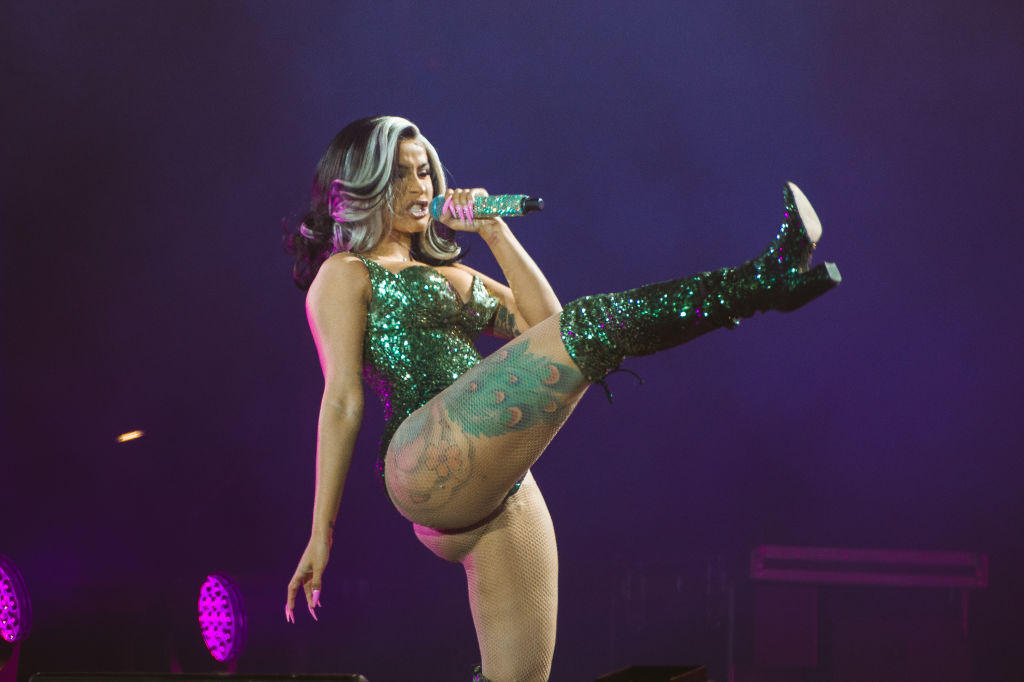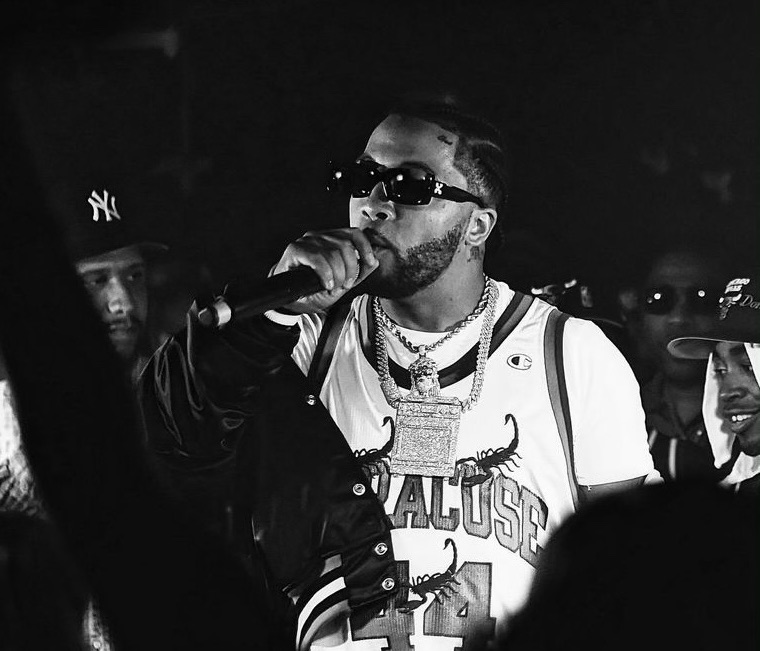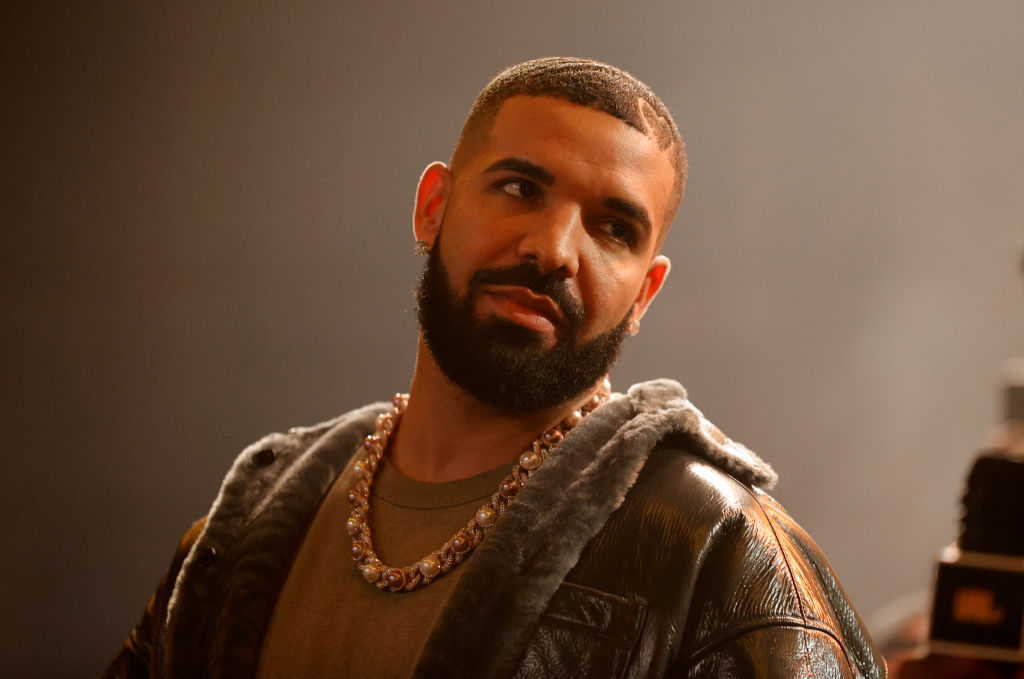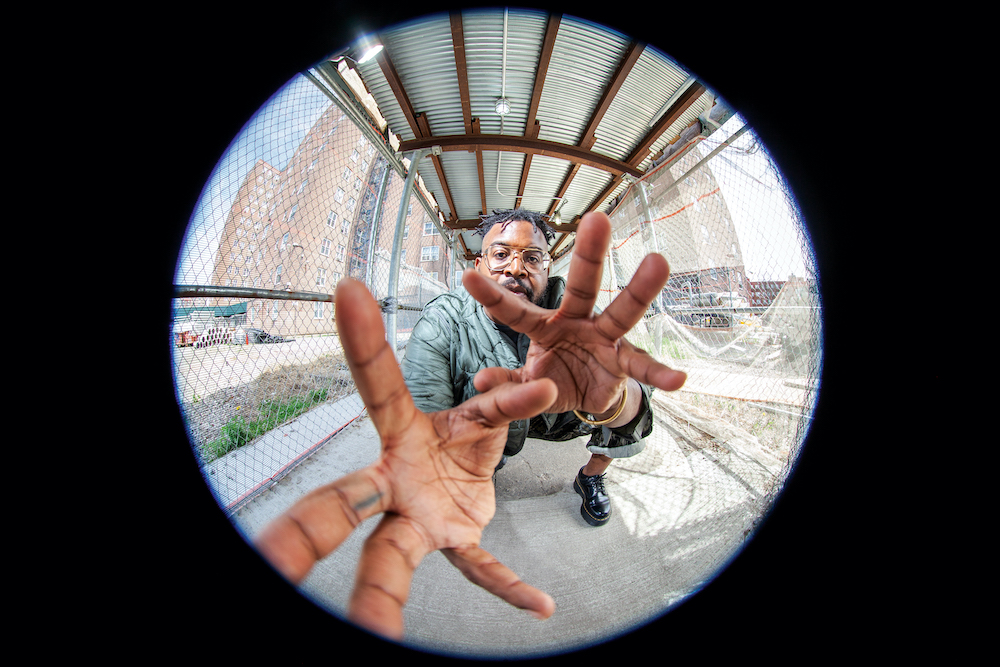"Stank-ass rappers make me sick! Everybody on the goddam stage got a mic! Forty motherfucking people! All of 'em got a mic! Motherfucker, why? We can't understand what one of your asses is saying. How you giving everybody a goddam mic?"
Steve Harvey was, at least a little bit, speaking truth to power. In The Original Kings Of Comedy, the 2000 Spike Lee-directed stand-up film that made him crossover-level famous, Steve Harvey asked the audience a rhetorical question: "You ever been to a rap concert?" And then he yelled indistinctly for an uncomfortably long period of time. Harvey was doing the dad-joke black-conservative schtick that has since made him notorious. (Even before he had his own line of suits, he was already wearing what could only be called a Steve Harvey suit.) And this was old-man harrumphing -- a shot at a whole younger generation. Harvey believed that '70s R&B was king, that it should always be king. This was not a good-faith argument. But he had a point about rap shows.
For the first few decades of its existence, rap shows -- even arena-level rap shows -- were a fucking mess. There were exceptions, of course: Public Enemy, the Roots, Cypress Hill, KRS-One, DMX, Dr. Dre's absurdly produced Up In Smoke tour. But if you were going to rap shows in the '90s and '00s, you were inviting frustration. Venue sound engineers had no idea how to make rap sound like anything other than echo-drenched bedlam. Rappers weren't getting booked onto big package tours, so they'd do spot shows at colleges and clubs, unrehearsed and unprepared for whatever calamities might befall them. Hangers-on would cajole their way on stage, and, yes, a lot of the time, they would get microphones. It was nuts.
I have been to so many shows from great rappers, at or near the peak of their powers, that turned out to be just total ass. Wu-Tang in '96, everyone shouting over everyone else and promoting their janky-ass side projects. Busta Rhymes in '01, genuinely incensed and stalking offstage after what he deemed to be a tepid crowd response. Lil Wayne in '08, attempting to play a guitar solo during "A Milli." But at some point in the past decade or so, all of that changed. Kanye West started mounting elaborate spectacles, and everyone scrambled to catch up. Rappers figured out that there was more money in touring than there was in practically any other music-related avenue. A whole infrastructure sprang up -- not just arena-sized tours, but club and theater ones, too. And then, somehow, a whole lot of rap tours became slick, produced, generally thrilling packages. Last week, for the first time in a while, I saw one for myself. Cardi B came to town.
The city where I live -- Charlottesville, Virginia -- is a small and predominantly white college town, and it's also a place where the one entity that controls most of the local venues almost never books rap shows. Before last week, I hadn't caught one of these big arena-sized rap tours since Rick Ross' Maybach Music tour, almost seven years ago. That one was a pretty satisfying spectacle, with Ross tag-teaming with labelmates Meek Mill and Wale, rather than the two of them opening for him. But it still had a few echoes of those old, rusty rap shows -- bad sound, messy vocal performances, inconsistent performances. The arena was maybe half full. It wasn't exciting.
Last week, Cardi B arrived, and that shit was exciting. Cardi has only been on rap's A-list for, at best, two years. She only has one album and a couple of mixtapes. This was one of the final dates on her first headlining arena tour. She was playing a college town in the dead of summer, when the students weren't around. And while Cardi's album is great, and she's had a ton of pop success, I was worried that she hadn't reached full icon status yet. I was worried I'd be watching a sloppy show in a mostly empty arena. I shouldn't have worried.
For one thing, the crowd showed up. If Cardi didn't fill the arena, then she came close. I saw no empty seats. And this was a big night out, too. If you go to enough club-level rock shows, the whole ritual can feel a bit like a routine, a slog. This was not that. People were fired all the way up. The crowd was overwhelmingly female -- I'd put it at 65-70%. I don't think I've ever been to any show, at any size, where women dominated the crowd the way they did at that show. (Jermaine Dupri recently made a whole lot of social-media noise when he complained that today's female rappers are more like strippers than rappers. Cardi is an actual ex-stripper, and she spends plenty of her show dancing, but I don't think chumps like Dupri understand how she's not doing that for the benefit of the men in the audience.) The crowd came to be a part of the show -- to dress up, to shout along, to perform. The gay couple in front of me who frantically twerked through the entire show basically became celebrities in our section; they'd posed for photos with half the crowd around them by the time the show was over.
For another thing, this was a show. Everyone on the bill had a tight, rehearsed, crowd-pleasing set. The Bay Area rapper Saweetie, who opened the show, only has one hit, and she owned up to being a "new artist" onstage, but she still had a whole troupe of dancers, a ton of charismatic energy, and enough hooks to sustain a quick 20-minute set without losing the crowd. Kevin Gates, meanwhile, proved to be an outsized cult hero. Years ago, I watched Gates, defiant and angry, rip an absolute hole through an Austin rooftop during SXSW. He seemed disgusted by the rigamarole of performing for disinterested industry gladhanders, and his response was to rap like a man possessed. All these years later, Gates has done serious prison time, dropped a ton of weight, and become a star. He has hits. He has crowd-pleasing stage patter: "Have you ever felt dick in your sternum?" He has a new-lease-on-life glow. Gates and Saweetie didn't have hypemen; they had DJs who did hypeman duty when needed. They rapped over their own vocals, but they did it with panache. They seemed like they belonged in an arena.
And as a performer, Cardi was on a whole different level. She is still relatively new to the pop-star game, but you wouldn't know it. By this point, she's got enough verses on hit songs that she could get through a whole hour-plus show without doing any deep cuts, any songs that the whole crowd didn't know, and without even bothering to do anything beyond the first verse of her breakout smash "Bodak Yellow." (Which was too bad; I would've loved to hear the whole song.) Even her throwback mixtape tracks were hits.
As arena shows go, Cardi's was relatively low-tech. There were pyro explosions and confetti cannons, and there were backup dancers -- a dozen or so identically styled women, all looking hard and expressionless behind sunglasses, like sexy versions of Public Enemy's S1Ws. There was a fancy car at the side of the stage. But Cardi didn't have an elaborate set. She didn't have a whole lot of props. The closest thing to a costume change was the moment where someone in the crowd threw a scrunchie onstage and Cardi tucked her mic into her cleavage so that she could put her bright-pink hair in a ponytail. Or maybe the moment when she somehow lost one boot and just immediately kicked the other one off and did the rest of the show barefoot.
Cardi has the most important quality that an arena-level star can have: When she says "I," it resonates as "we." She makes music for full-room singalongs, for women standing on chairs bleachers to rap full verses at the total strangers behind them. She emits total joy while performing -- like she can't believe her good fortune at being in Charlottesville on a damn Wednesday night. As the show ended, the DJ cued up Lil Nas X's "Rodeo," the one with the Cardi guest verse. As it was playing, Cardi sauntered offstage, then thought better of it, jumping into the crowd and running through the throng, grabbing and hugging everyone in arm's reach, then running up into the lower level and dancing with everyone around her. I'd like to see a stank-ass comedian do that.
FURIOUS FIVE
1. Tha God Fahim - "Location: State Of Mind" Tha God Fahim comes from Atlanta. Earl Sweatshirt, producer responsible for the muddy bass and mournful horns on "Location: State Of Mind," comes from Los Angeles. And yet "Location: State Of Mind" sounds like the most mid-'90s New York thing that ever happened. That's a good thing. 2. Jasiah - "Shenanigans" (Feat. Yung Bans) A Dayton teenager screams his lungs out over a Ronny J beat that sounds like a frisky bunny mainlining late-'90s Fatboy Slim. Rap music is a beautiful thing. 3. Go Yayo - "Rockstar (No Hook)" (Feat. Stunna 4 Vegas & DaBaby) Any time a rap song has the phrase "no hook" in its title, that is going to be a good rap song. Here, we have three rappers who clearly enjoy rapping, and who are very good at it, an all of them get a chance to go nuts in less than two minutes. 4. Queen Key - "Noodles" "I got voodoo for bitches who want to be the ruler / Attitude is a fool, and I do not need a shooter." Queen Key is good at rapping. 5. Rico Nasty - "Welcome To The Party (NastyMix)" "Welcome To The Party," the viral breakout from the Brooklyn drill rapper Pop Smoke, was already a monster. When Rico Nasty uses it as a trampoline for her double-time howling, it becomes a whole other thing.IT WAS ALL GOOD JUST A WEEK AGO
Can we take a moment to figure out what the FUCK this guy in the green shirt is doing in this @ConceitedNYC GIF because it look like he's beating off during a rap battle pic.twitter.com/KP8WyqZb8O
— Block Hand Luke🏁 (@WHUTUPDOE) August 5, 2019






